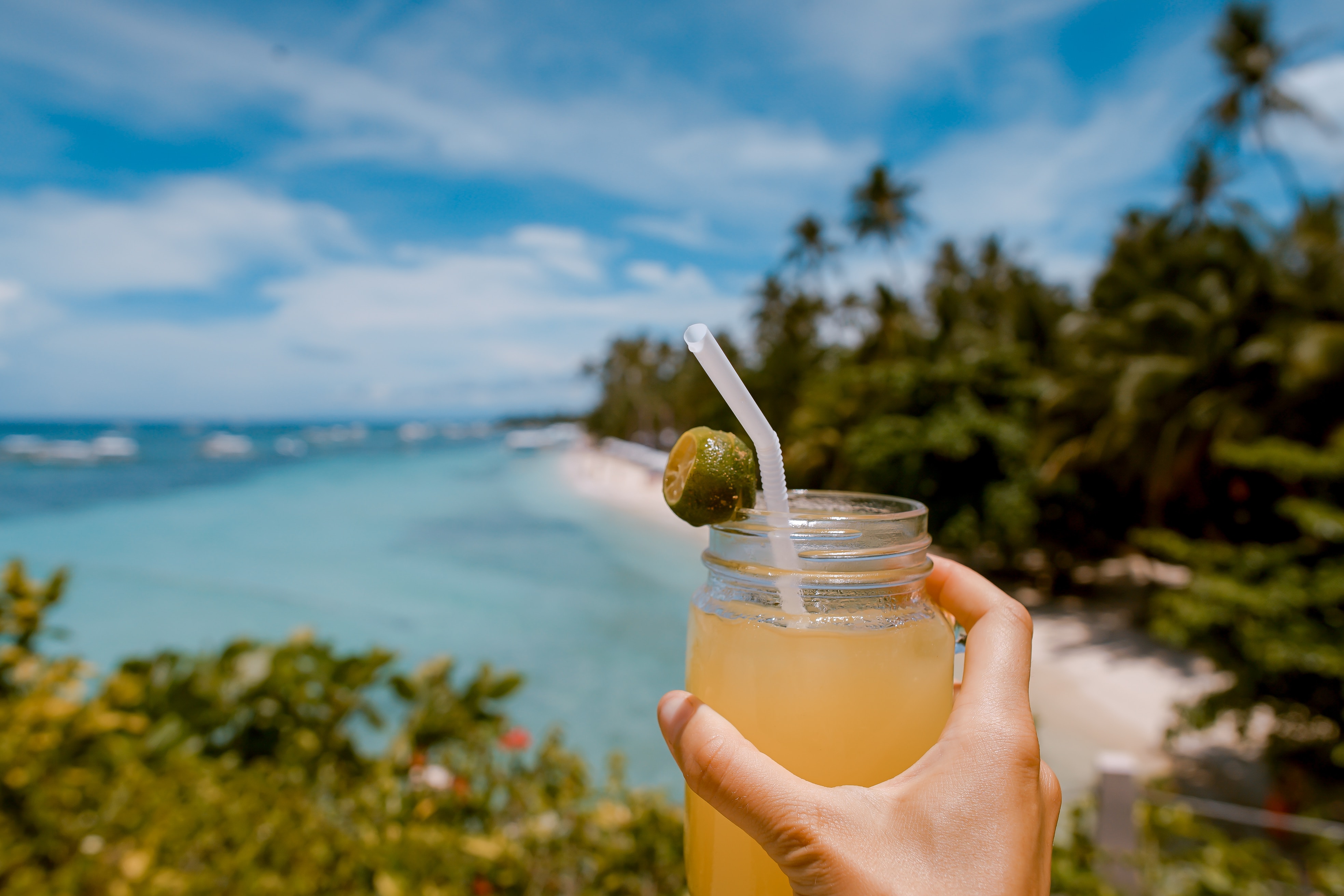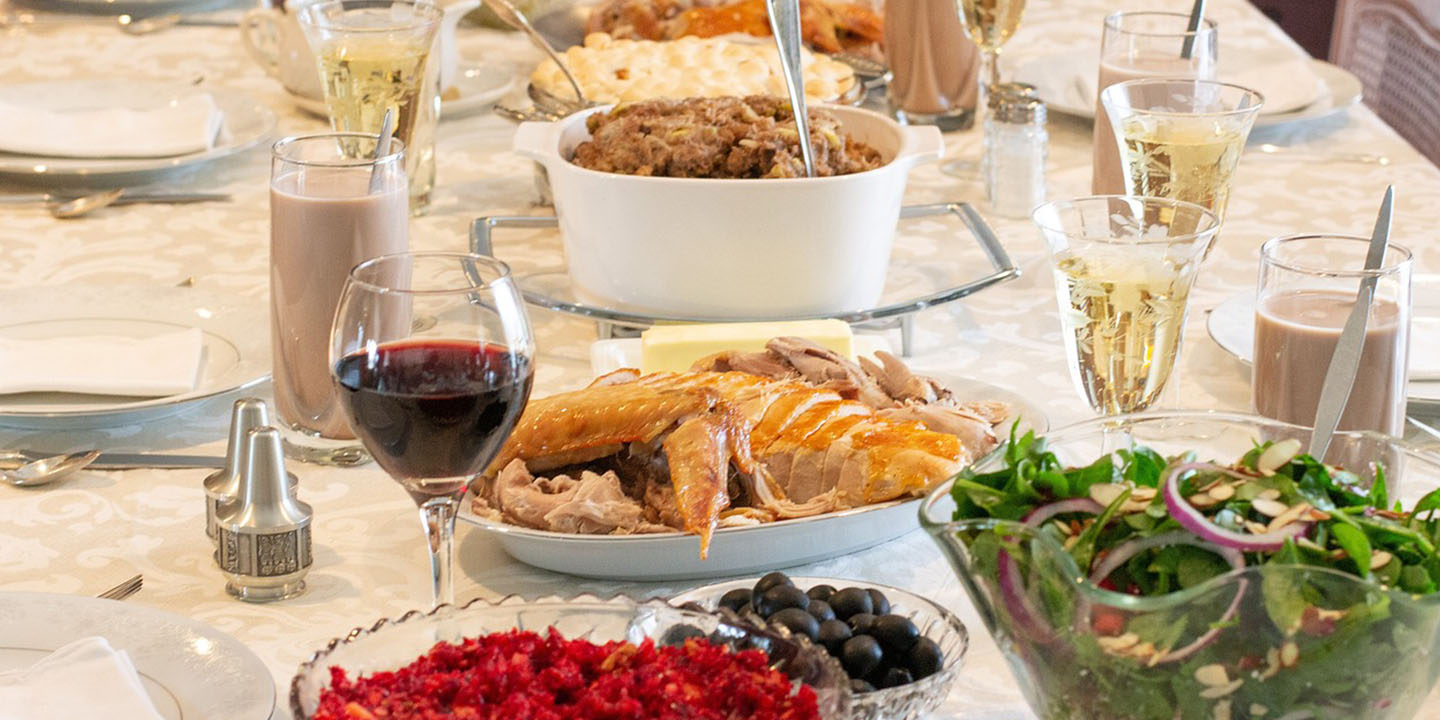Eating Tips from Around the Globe
Feeling bored with your current diet and looking for variety to spice things up? Good news: you can take tips from different countries and cultures to inspire better lifestyle choices, whether it's incorporating more beans into your meals or taking an evening stroll after dinner. From Iran to Sweden, Japan to Mexico, here are 20 healthy eating habits around the world worth adopting.
1. Iran: Use More Herbs
Iranians love incorporating sabzi, or herbs, into their dishes, from infusing parsley and cilantro into hearty pots of beef stew to whisking in chives and dill to fry up perfect frittatas. But these healthy herbs aren't just great for enhancing flavor—they also contain phytochemicals, which help protect against heart disease and cancer.
2. Sardinia: Eat More Nuts
Sardinia isn't just known for its Blue Zone diet—which spotlights legumes, fruits, goat's and sheep's milk—it's also known for its abundance of nuts. Snacking on heart-healthy almonds and walnuts over ultra-processed food is a great way to reduce calories, boost fiber and protein intake, and lower cholesterol levels.
3. Spain: Take a Nap
You might think it odd to sleep in the early afternoon and then eat dinner late in the evening, but to Spaniards, this is the local tradition. While this custom isn't necessarily rooted in a conscious effort to stay healthy, a power nap after lunch may be just what you need to refuel for the day ahead—and stop bad snacking habits in their tracks.
4. Costa Rica: Eat More Squash
Part of the Blue Zone, Costa Ricans—particularly those from the Nicoya region—center their diet on plant-based foods, like veggies, fruits, grains, and beans. Meat isn't as heavily consumed; squash is. And simple as it is, this meal staple might just be the secret to why Nicoyans have a higher average life expectancy (85 years compared to 76) than Americans.
5. India: Eat More Plant-Based Protein
From lentils to chickpeas, Indians love incorporating plant-based protein into their dishes. But packing protein isn't the only benefit of these legumes—they're also high in fiber and minerals (think manganese, iron, and magnesium), yet low in cholesterol, making them great heart-healthy picks.
6. Japan: Eat More Fish
Whether it's a plate of sashimi, a roll of sushi, or a mound of nigiri, the Japanese embrace fresh, juicy slices of raw fish. That's not only because it's delicious, but varieties like salmon and tuna pack in plenty of heart-healthy fats, protein, and essential nutrients, like vitamins B6 and D.
7. China: Use Chopsticks
Who knew that the utensil you eat with could have such an impact on your eating habits? And yet, for the Chinese, using chopsticks isn't just seen as more polite and elegant; it also slows your meal pace. This allows you to practice a more mindful approach to eating, with smaller bites and portions so you're more in tune with your fullness cues.
8. Germany: Ferment Your Veggies
Sauerkraut, a traditional German dish of fermented cabbage, is a great food to pair with your meals. Anything fermented (in the case of sauerkraut, by various lactic acid bacteria) gives your gut's microbiome a boost, so this might be a sign to add a plate of this tangy veggie to your next meal.
9. Greece: Eat Oily Fish
The Greek Mediterranean diet may be veggie-heavy, but oily fish is another staple that shows up in almost every feast. Fish, as you probably already know, is a great source of protein and omega-3 fatty acids—the latter of which is even more abundant in oily varieties.
10. Ethiopia: Dine with Variety
Injera—a pancake-like flatbread made with teff flour—is Ethiopia's national dish, and is often served and eaten with spicy veggie and meat-based stews (wots) which are spread over the top. The variety is what makes the Ethiopian diet so nutritious, and is something we could all learn from.
11. Korea: Eat Kimchi
Germans aren't the only ones eating fermented veggies; Koreans, too, have been pairing side dishes (banchan) with their meals since forever, which often include a heaping portion of kimchi. And just like sauerkraut, this spicy, fermented plate of cabbage or cubed radish offers ample health benefits that strengthen the gut and immune system.
 Portuguese Gravity on Unsplash
Portuguese Gravity on Unsplash
12. India, Ethiopia, Bangladesh: Use Spices
Spices are heavily used in Indian, Ethiopian, and Bangladeshi dishes, and that's perhaps something to take note of. After all, seasonings like turmeric, cardamom, berbere, and cumin offer antioxidant and anti-inflammatory properties, which means they don't just level up flavor, but help support heart, gut, and brain health.
13. Iceland: Eat Unprocessed Food
Years of harsh weather and a barren landscape have made it difficult for Icelanders to cultivate a rich diet past their rustic roots, but this has shaped a kind of cuisine you probably won't find anywhere else. Preserved and fermented dishes, like hákarl (fermented shark) and svið (cured sheep's head), are this country's tradition, but natural, unprocessed foods like skyr (creamy low-fat yogurt) and dark rye bread are also beloved staples.
 micheile henderson on Unsplash
micheile henderson on Unsplash
14. Syria, Palestine, Egypt, Lebanon, Jordan: Eat Freekeh
Freekeh, a cereal grain made from green wheat, is an ancient dish originating in Levantine and North African cuisines. It has a chewy texture and a smoky, nutty flavor, and is an excellent source of protein, fiber, and essential minerals, like magnesium, manganese, and zinc. It's not only healthier than rice—it even beats out quinoa in terms of protein and fiber, while being low in fat.
15. Japan: Eat Until 80% Full
The Japanese tradition of eating until you're 80% full, or hara hachi bun me, might be just the secret to losing weight; after all, it's probably not a great feeling to eat until you're stuffed and bloated. So, as soon as you start to feel full, mimic the Japanese and set your bowl down.
 Laura Villela Beauty Designer | Brasil on Pexels
Laura Villela Beauty Designer | Brasil on Pexels
16. USA: Saying Grace
While saying grace before meals is mostly practiced by the devout, maybe there's another advantage to it than just extending your appreciation to the Gods: it sets the tone for intentional eating. You're likely to eat more slowly and mindfully than if you were to forgo the prayer and dig in right away.
17. Mexico: Eat More Beans
If you're not already adding beans to every meal, take inspiration from the Mexicans and start doing it. Whether you're pairing them with rice or loading them up in a burrito, beans pack a punch and are loaded with protein, fiber, and vitamins that support a healthy gut.
18. China: Drink Warm Water in the Morning
Sometimes, the key to a healthy lifestyle may be as simple as starting your morning off with a warm cup of water. Not only can it ease congestion (if you experience regular sinus issues), but it also aids digestion and circulation. It may even boost your metabolism. You can also pair green tea with your meals, which offers ample heart-healthy benefits.
19. Italy: Evening Walk
Fancy a stroll around the park after dinner? Well, in Italy, they do just that. While a passeggiata is typically taken in the evening, you can go for a walk any time post-meal, which can improve digestion, regulate blood sugar levels, and help with weight loss.
20. Sweden: Just the Right Amount
The Swedish have adopted a lifestyle concept called lagom, which means "just the right amount." This means good portions, balanced meals, and an emphasis on using fresh, nutritious ingredients in every plate. If you're trying to ease yourself out of a habit of overconsuming, maybe it's a sign to follow the lagom mindset and have things in moderation.
KEEP ON READING

























